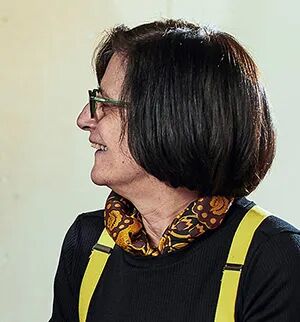杨廷宝先生,字仁辉,是我国著名建筑学家和建筑教育家,好色tv 建筑学科创立的一代宗师。2021年杨廷宝先生诞辰120周年之际,为传承和光扬先生的学术精神,好色tv 开设“仁辉讲堂”,长期延请国内外著名学者、建筑师举办讲座,弘扬学术,激励后学,推动中国建筑和建筑教育事业的蓬勃发展。本期仁辉讲堂,由苏黎世联邦理工学院艺术与建筑史讲席教授菲利浦·乌斯普朗(Philip Ursprung),以及纽约市立大学伯纳德与安妮·斯皮策好色tv 教授埃丽莎贝塔·特拉尼·福斯特(Elisabetta Terragni Forster)主讲,采取线上线下同步直播的方式开展。
Professor Yang Tingbao, also known by his courtesy name as Renhui, was a renowned Chinese architect and architectural educator, who founded the architectural discipline at Southeast University. To honor his academic legacy, on the occasion of Prof. Yang Tingbao’s 120th anniversary in 2021, the School of Architecture at Southeast University launched the "Renhui Forum". This ongoing initiative invites leading scholars and architects from China and abroad to give lectures, advancing academic excellence, nurturing emerging talents, and promoting the development of architecture and architectural education in China.
The upcoming lecture will feature Philip Ursprung,Professor of the History of Art and Architecture at ETH Zurich,and Elisabetta Terragni Forster, Professor at the Bernard and Anne Spitzer School of Architecture at the City College of New York. The lecture will be held both at the venue and via livestream.
直播信息
点击下方链接进入直播间地址
//live.bilibili.com/22255700
Bilibili直播间ID好色tv

谁的美?建筑中的常规与形式
Whose Beauty is it? Norms and Forms in Architecture
主讲人: 菲利浦•乌斯普朗
Philip Ursprung
这场讲座将讨论“美丽”、“如画”和“崇高”这三个概念在西方文化中的历史,聚焦18世纪和19世纪初爱德蒙•伯克和约翰•沃尔夫冈•歌德的哲学思想。讲座强调皮埃尔•布迪厄在20世纪末提出的社会学观点,认为品味和审美范畴与社会阶层密切相关;探讨为什么“美”通常被其他术语所取代,并提议重新激活“美”这一概念,从而强调建筑自主性以及形式在设计和批判性反思中的重要性;通过赫尔佐格与德梅隆、彼得•卒姆托、拉卡顿与瓦萨尔、OMA和王澍的建筑作品,举例展示建筑的美学分类。
The lecture discusses the history of the notions of “beautiful”, “picturesque” and “sublime” in Western culture, focusing on the philosophy of Edmund Burke and Johann Wolfgang Goethe (18th and early 19th century). It highlights the sociology of Pierre Bourdieu (late 20th century) who related taste and aesthetic categories to social classes. It asks why “beauty” is generally substituted by other terms. It proposes to reactivate the notion of beauty as an emphasis on architecture’s autonomy and the role of form in design and critical reflection. It gives examples of an aesthetic categorization of buildings by Herzog & de Meuron, Peter Zumthor, Lacaton & Vassal, OMA and Wang Shu.
讲者简介

菲利普•乌斯普朗,苏黎世联邦理工学院艺术与建筑史讲席教授,曾在日内瓦大学、柏林自由大学、苏黎世联邦理工学院、哥伦比亚大学、巴塞尔大学、苏黎世大学等学术机构任教。他曾任苏黎世联邦理工学院好色tv 前院长,2024年起担任苏黎世联邦理工学院历史与理论研究所所长。他曾获得多个国际奖项,2023年与卡琳•桑德(Karin Sander)一同代表瑞士参加了第18届威尼斯建筑双年展。
Philip Ursprung, Professor of the History of Art and Architecture at ETH Zurich, has taught at academic institutions such as the University of Geneva, Freie Universität Berlin, ETH Zurich, Columbia University, the University of Basel, and the University of Zurich. He served as the Dean of the Department of Architecture at ETH Zurich and has been the Head of the Institute gta since 2024. He has received multiple international awards and, in 2023, represented together with Karin Sander Switzerland at the 18th Architecture Biennale Venice.
片段
Fragments
主讲人: 埃丽莎贝塔•特拉尼•福斯特
Elisabetta Terragni Forster
片段通常不被欣赏——它们是破碎的部分,往往不被期待重新拼接。我们看待它们时,总是从它们曾经的样子出发,作为辉煌过去的一部分,而不幸的是,这段过去已经永远消失。
然而,片段是不可或缺的,它们是时间流逝的象征。如果不加干扰,它们会找到新的联系,重新与其他元素建立视觉关系,从半遗忘的状态中焕发新的生命。
我们很幸运能够在充满片段的工作室里工作;其中一些片段保留了原有的位置,许多则藏匿于其他物体后面,部分被重新添加,还有些恢复了原有的角色和位置。
这些片段没有被冻结在时间中,它们随着我们的节奏流动。
工作室是我们思考、提问、实验和玩耍的安全空间。这里有时是孤独的,夏天或许更加拥挤,因为它有厚重的石墙保护,保持凉爽。工作室是一个让人想要反复回到的地方。
更重要的是,这里是朱塞佩•特拉尼和他的兄弟阿提利奥于1926年开设事务所的地方,正是阿提利奥提供了他们的第一个工作机会。这个过程一旦开始,你便不愿停止——在同一时刻回望过去与展望未来。关键不在于隐藏,而是要把过去和现在的作品及未来的想法展示在同样的墙上。
从光学装置到转化为博物馆的废弃建筑,我们追溯着最近的研究与建筑创作。
Fragments are not usually admired – they are broken pieces that are not supposed to fit together again. We never look at them from the point of view of how they are now but from the way they were, as part of a splendid past that is, unfortunately, gone, forever.
Yet fragments are essential; they are symbols of time passing and, if you leave them alone, they will find new friends, with new visual relationships arising from their half forgotten condition.
We are very fortunate to work in a studio full of fragments; some of them have maintained their original positions, many have been discovered hiding behind other things, some have been added , and a few have been restored to their original roles and positions.
None of them are frozen in time, they just move at our own pace.
The studio is our safe space to think, ask questions, experiment, and play. It is a solitary place at times, perhaps more crowded in the summer because it is very cool, protected as it is by thick stone walls. The studio is a place one needs to go back to.
More importantly, it is the space where Giuseppe Terragni opened his office in 1926 with his brother Attilio, who provided their first job. Once you start this process, you don't want to stop the process of looking back and forward at the same time. The key is not to hide anything but to display past work, current work, and future ideas together on the same walls.
From optical devices installation to abandoned structures turned in Museums we trace our recent Research and architectural work.
讲者简介

埃丽莎贝塔•特拉尼•福斯特,纽约市立大学伯纳德与安妮•斯皮策好色tv 教授,曾在米兰理工大学、纽约理工学院、苏黎世联邦理工学院任教。1993年在科莫创立了Studio Terragni Architetti事务所,2011年在纽约创立了DRAW(设计研究建筑写作)工作室,项目涵盖工效学分析到大规模废弃遗址的改造与再生及展览设计。她特别关注不连续性、空隙与被遗忘的地方,以及那些已成为废墟的结构。她曾为多个国际机构和组织提供咨询服务并获得多个国际奖项,2014年出版专著《埃丽莎贝塔•特拉尼建筑设计中的地图、门槛与断裂》。
Elisabetta Terragni Forster, Professor at the Bernard and Anne Spitzer School of Architecture at the City College of New York. Previously she taught at the Politecnico di Milano, the New York Institute of Technology (20052006) and the Federal Institute of Technology (ETH) in Zurich. In 1993 she founded the Studio Terragni Architetti in Como and in 2011 the DRAW (Design Research Architecture Writing) studio in New York. Projects range from ergonomics analyzes to the transformation and regeneration of vast abandoned mi sites, to the design of exhibitions. Discontinuities, voids and forgotten places, structures that have fallen into ruins are her favorite spaces for invention. She has provided consultancy for international agencies and institutions and has received numerous international awards. In 2014 the Gaps monograph: ‘Maps, Thresholds and Breaks in the Architectural Designs of Elisabetta Terragni’ was published.


